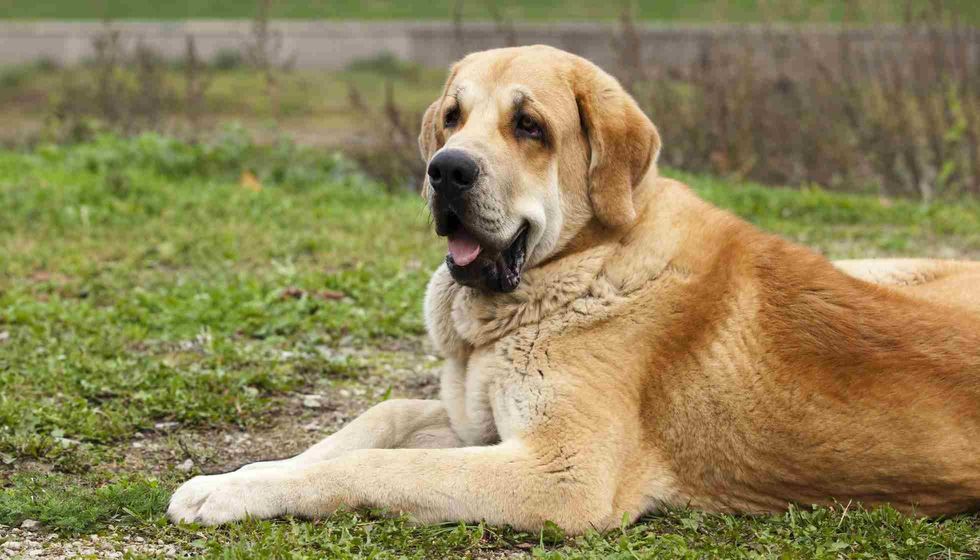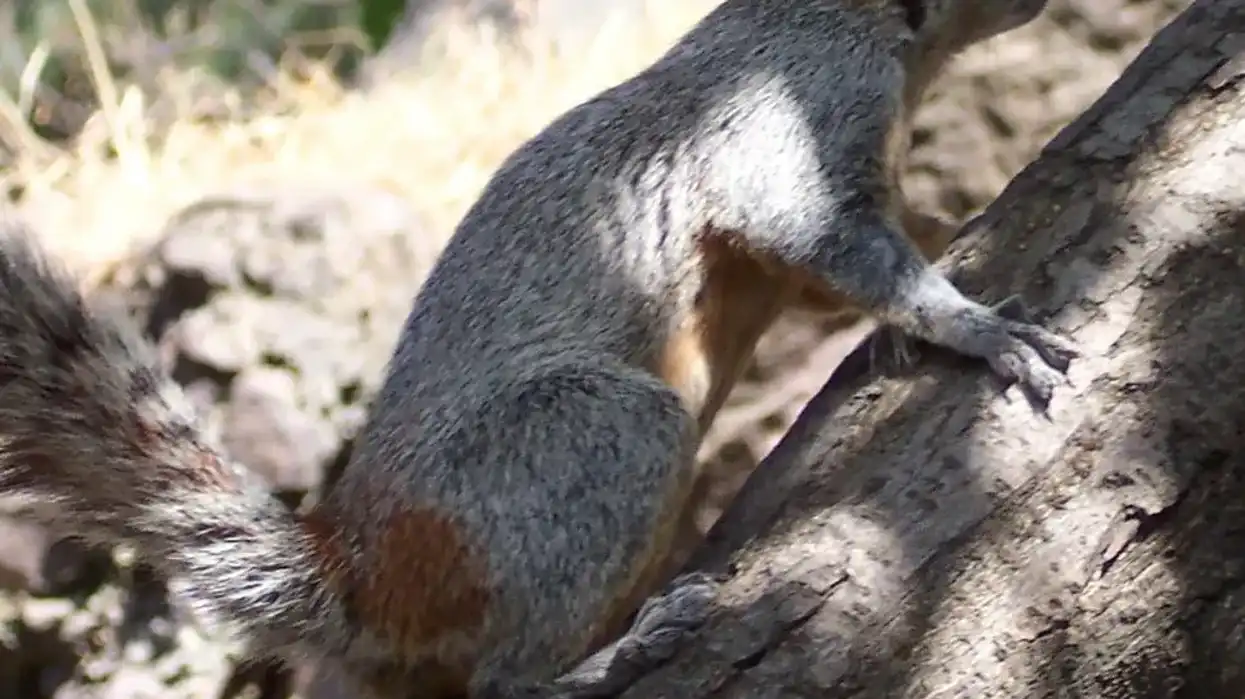Spanish Mastiffs are a giant breed of livestock guardian dogs. This breed would follow herds of sheep crossing from northern to southern Spain in medieval times, protecting the livestock from wolves and other predators. Throughout history, Spanish Mastiffs have had an impressive timeline of adaptation and growth.
Mastiffs proudly wore chunky metal necklaces and skewers. Their primary role was to be defensive, as opposed to their fellow Carea dogs, whose primary function was to feed whilst moving the herds.
The FCI issued the first breed standard for Spanish Mastiffs in 1946. In 1981, the Asociacion Espaola del Perro Mastn Espaol was created, which organized a breeding program in search of big and heavy Mastiffs.
They even drafted a new breed standard aimed at resurrecting the old cattle dogs. These cattle dogs are also great as pets, guard dogs, and for protection.
Spanish Mastiffs are a massive and strong dogs that look identical to other Mastiff breeds. They have a broad and strong head and a very stern smile.
Heartwarming, but also intimidating. Spanish Mastiffs have narrow eyes and a triangle-shaped head. The coat of these dogs is usually fawn in color, but it may also be reddish-brown or black.
These noble giants are reserved, elegant, cool, and wise. These dogs are highly loyal and devoted to their family. They may welcome strangers respectfully if properly socialized, but they can sometimes be hostile with other dogs.
In urban environments, Spanish Mastiffs booming voice and large size may sometimes make them an unsuitable pet. Socialization and grooming should begin as soon as possible to ensure that these dogs become a stable and dependable companion.
If you enjoyed this article on these large breeds, do visit our other articles on xenopus or central asian shepherd dog.
Spanish Mastiff Interesting Facts
What type of animal is a Spanish Mastiff?
Spanish Mastiffs are a purebred dog with a long tradition of protecting sheep and livestock. These gentle giants who are protective, caring, and peaceful have become common guard dogs as well as family pets.
What class of animal does a Spanish Mastiff belong to?
This dog is a large breed and belongs to the mammalia class.
How many Spanish Mastiffs are there in the world?
No survey has been conducted to calculate the population of this species. However, what we do know is that there are 14 different species of Mastiffs in the world.
Where does a Spanish Mastiff live?
This species is primarily bred and sold in Spain, which explains the name Spanish Mastiff.
What is a Spanish Mastiff's habitat?
These dogs were originally found in the mountainous regions of Spain. With time, they have grown to adapt themselves to human-made environments such as houses with yards and apartments.
Who do Spanish Mastiffs live with?
Spanish Mastiffs prefer being the only pet in the family and love to live with humans. They may also live with other Spanish Mastiffs.
How long does a Spanish Mastiff live?
Spanish Mastiffs live for ten to 12 years. Some, on the other hand, may survive for 14 years or more which is quite a long time for a big dog breed.
How do they reproduce?
When it's time for the pregnant female to give birth, she looks for a very secluded location where she can give birth alone and raise the pups. Females are pregnant for around 65 days which is known as the gestation period.
One tip is to make sure you provide your dogs (including the new puppies) with bells so you may easily locate them when they roam around freely.
What is their conservation status?
The conservation status of Spanish Mastiffs is Not Evaluated. Spanish Mastiff breeds may suffer health problems, including hip dysplasia, but there is not a major threat to their population.
Spanish Mastiff Fun Facts
What do Spanish Mastiffs look like?
Spanish Mastiffs are a strong dog that look identical to other Mastiff breeds. They have a broad and strong head. They have narrow eyes and a triangle-shaped drop head. The coat of this dog breed is usually fawn, but it may also be reddish-brown, orange, or rusty.
How cute are they?
These large furry guard dogs are very cute.
How do they communicate?
Mastín Español breeds use various vocalizations, also known as auditory speech, which includes barks, howls, growls, whines, and sighs. These dogs also use their sense of smell and indulge in classic sniffing.
How big is a Spanish Mastiff?
The size of an average Spanish Mastiff dog breed is incredible. Most Mastín Español breeds stand between 26-35 in (89 cm) tall at the shoulder. This species is about half the height of an average human.
How fast can a Spanish Mastiff run?
This livestock guardian dog shows laziness and spends a lot of time cuddling with their owners, but they are a lot more active and athletic than they appear. Some pet owners can be put off by their size, but these cuddly, large dogs enjoy racing around a large backyard or playing fetch with children.
The speed of this species has never been calculated or studied.
How much does a Spanish Mastiff weigh?
No matter what dog breed you have, maintaining their weight is very important. These guardian dog breeds are known to gain weight easily, so a diet rich in protein, healthy fats, soft bone, vegetables and vitamins is necessary for avoiding all sorts of health issues.
Females are typically smaller and weigh between 140-170 lb (63-77 kg), while males weigh between 150-220 lb (68-99 kg).
What are the male and female names of the species?
A male Spanish Mastiff is called a stud, while a female Spanish Mastiff is called a bitch.
What would you call a baby Spanish Mastiff?
Baby Spanish Mastiffs are called Spanish Mastiff puppies.
What do they eat?
Puppies aged eight to 12 weeks need around four meals a day. Spanish Mastiff puppies aged between three to six months ought to be fed three times a day.
Puppies aged six months to one year ought to be fed twice a day. When your Spanish Mastiff hits the age of one, one meal a day is ideal.
Spanish Mastiffs sometimes prefer two smaller meals. It is the owners responsibility to learn about the eating habits of their dog, and evaluate whether two small meals or one bigger meal would be ideal for their dog.
You can feed them dried food mixed with broth or frozen food with essential nutrients for full-grown Spanish Mastiffs. Spanish Mastiffs can eat fruits, veggies, boiled eggs, and soft organic cheese, but this should not surpass ten to twelve percent of their daily recommended intake. Spanish Mastiff puppies should be fed high-quality dog food.
Are they slobbery?
Yes, Spanish Mastiffs are very slobbery dogs. One of the most obvious characteristics of Spanish Mastiffs is that these dogs drool a lot, like all Mastiffs. Drooling is more common in dogs during chewing, playing, or drinking.
Owners may even keep a drool rag handy in order to wipe the dog whenever necessary. There might be various reasons why Mastiffs start to salivate more than normal. This can also happen when the mastiff drinks as excess water can get trapped in the folds.
Would they make a good pet?
These livestock guardians are good pets, but since these dogs are strong-willed, Spanish Mastiffs are not a suitable breed option for first-time dog owners. These dogs are called livestock guardians for a reason and have historically served that purpose.
They need firm training from someone whom the dog recognizes as a master. They're a large breed, and considering their laziness, they don't make good apartment dogs.
They get along just as well with families as they do with single owners, and they don't bark much. Since Spanish Mastiffs are such a big breed, they are strong pups and enjoy playing with children.
Because of the size of these puppies, it is important to supervise their playtime with children since even the most well-behaved canine can inadvertently injure a young child. They develop close relationships with their families and become very protective of all children in the home.
Children who learn how to handle and play around bigger dogs at a young age will find the perfect playmate in a Spanish Mastiff. Overall, they are excellent family dogs.
Did you know...
Several crosses of this breed has been made over the years. Northern Spain has a heavy variant of this breed, while Southern Spain has a lighter version of the Spanish Mastiff.
The famous Spanish painter Velazquez often depicted this breed in his art. They are also referred to as Mancha Mastin de Extremadura, de la Mancha Mastin, Mastin de la Mancha, and Mastin de Leon.
History of the Spanish Mastiff
Spanish Mastiff guard dogs are an ancient breed with a rich history. Spanish Mastiffs first appeared on the Iberian peninsula before the Roman conquest, as they had been taken there by the Phoenicians and Greeks over 2,000 years before.
Virgil's writings from 30 A.D. include the first mentions of a Mastiff. In his poem 'The Georgics', Virgil states that the loving nature of the Iberian peninsula Mastiff makes them the ideal protector and supporter of the herd.
This livestock guardian breed was mentioned again in the first century. Columella, a Roman agronomist and influential writer, wrote about Mastiffs in his novel 'Res Rustica'.
This livestock guardian breed gained prominence in the 10th century. Spains economy was focused on the production and elaboration of wool.
The raising of a new breed of sheep, named merinos, started in the 12th century, and development reached a climax. These animals spent their winter in the south of Spain and migrated to the northern mountain slopes at the start of the warm weather season.
Around 40,000 shepherds joined the roaming herds of sheep, and there was always at least one Mastiff per 100 sheep. This Mastiff was brought along for both the shepherd and the herds protection. Such massive migrations affected the Spanish society.
You can see these dogs in literary works as well as drawings by Velazquez. At the time, these dogs were well-known for their freedom, weather resilience, and defensiveness.
Getting your own Spanish Mastiff
The cost of a Spanish Mastiff puppy can vary greatly. Prices for a purebred Spanish Mastiff puppy start at 1,000 USD and go up to 1,500 USD.
Even so, some Spanish Mastiff breeders would ask for much more, particularly if the parents are show dogs. Additionally, once the breeder has had the puppy registered, vaccination, or microchipped the costs will increase. Be sure to check out respectable breeders if you want a dog that has been reared in a happy and safe environment.
These dogs are undoubtedly one of the best breeds ever, but Spanish Mastiffs aren't really the friendliest when it comes to other dogs. Spanish Mastiffs are very aggressive by temperament and do not enjoy the sight of another dog in their household, some can also show hostility towards cats.
It might be better if your Spanish Mastiff is the only pet in the home. However, in some cases, Spanish Mastiff puppies that have been socialized with other animals will be able to cohabitate with other pets as an adult.
Here at Kidadl, we have carefully created lots of interesting family-friendly animal facts for everyone to discover! Learn more about some other mammals, including American marten, or woodchuck.
You can even occupy yourself at home by drawing one of our Spanish Mastiff coloring pages.









